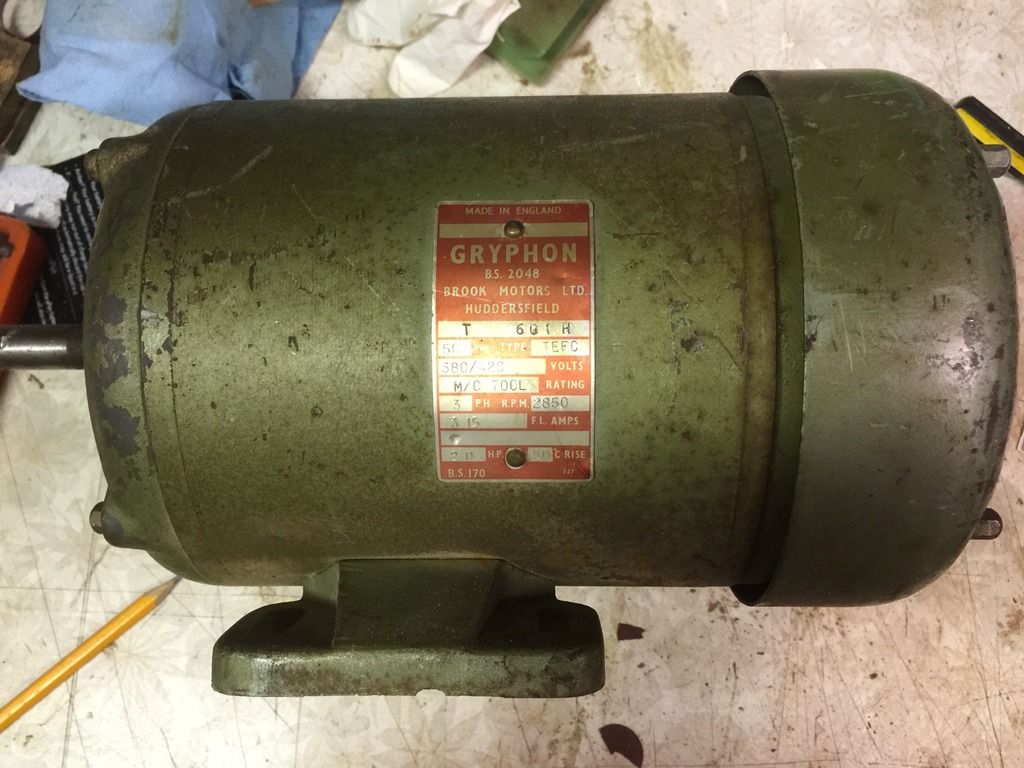memzey
Established Member
Hi gang,
I recently restored an old Wadkin dimension saw and am really happy with the way it is functioning. One thing that I still need to do is address the electrics including the motor. The original motor (which came with the saw) and switch are a three phase 2hp arrangement. The motor that is currently on the machine is single phase 2hp and the previous owner simply wired the three phase switch to run it. I'm convinced that's not the correct way to do it though, as the rating on the motor (8 amps) exceeds that of the switch (something like 4 amps IIRC). Although I expect some of you are aghast at the thought of this, the switch and motor appear to be running fine like this and if I weren't going to make any further changes I'd probably run with it like that. I do however wish to change the motor to a 3hp single phase one and do not want to risk running that with the current switch without taking further advice (asking bob et al on this board in other words). I could get a new switch but that would completely ruin the aesthetics of the machine which I am unwilling to do. I suppose I either need a suitable switch that looks like the one I already have or a change or upgrade to the innards of the existing switch. Below is a picture of the item in question with the wiring exposed:

My second question is about arbour diameter of pulleys and motor spindles. The new and the old motors both have smaller spindles (about 19mm I think) than I can find on a 3hp variant. The new motor fits ok on the original 3 belt pulley arrangement. Does anyone know of a supplier of 3hp, single phase, 19mm keyed motors? I've done all the research I can muster at the moment and have drawn a blank. New three belt pulleys of suitable arbour and relative dimension also appear to be like hens' teeth. Below is a pic of the original 3 phase motor if anyone is interested:

Many thanks for reading.
I recently restored an old Wadkin dimension saw and am really happy with the way it is functioning. One thing that I still need to do is address the electrics including the motor. The original motor (which came with the saw) and switch are a three phase 2hp arrangement. The motor that is currently on the machine is single phase 2hp and the previous owner simply wired the three phase switch to run it. I'm convinced that's not the correct way to do it though, as the rating on the motor (8 amps) exceeds that of the switch (something like 4 amps IIRC). Although I expect some of you are aghast at the thought of this, the switch and motor appear to be running fine like this and if I weren't going to make any further changes I'd probably run with it like that. I do however wish to change the motor to a 3hp single phase one and do not want to risk running that with the current switch without taking further advice (asking bob et al on this board in other words). I could get a new switch but that would completely ruin the aesthetics of the machine which I am unwilling to do. I suppose I either need a suitable switch that looks like the one I already have or a change or upgrade to the innards of the existing switch. Below is a picture of the item in question with the wiring exposed:

My second question is about arbour diameter of pulleys and motor spindles. The new and the old motors both have smaller spindles (about 19mm I think) than I can find on a 3hp variant. The new motor fits ok on the original 3 belt pulley arrangement. Does anyone know of a supplier of 3hp, single phase, 19mm keyed motors? I've done all the research I can muster at the moment and have drawn a blank. New three belt pulleys of suitable arbour and relative dimension also appear to be like hens' teeth. Below is a pic of the original 3 phase motor if anyone is interested:

Many thanks for reading.


































